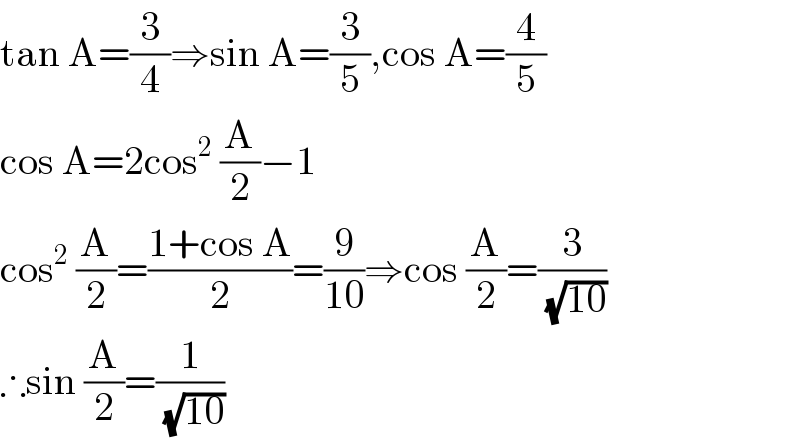
Question Number 21116 by mondodotto@gmail.com last updated on 13/Sep/17

Answered by Tinkutara last updated on 13/Sep/17

$$\mathrm{tan}\:\mathrm{A}=\frac{\mathrm{3}}{\mathrm{4}}\Rightarrow\mathrm{sin}\:\mathrm{A}=\frac{\mathrm{3}}{\mathrm{5}},\mathrm{cos}\:\mathrm{A}=\frac{\mathrm{4}}{\mathrm{5}} \\ $$$$\mathrm{cos}\:\mathrm{A}=\mathrm{2cos}^{\mathrm{2}} \:\frac{\mathrm{A}}{\mathrm{2}}−\mathrm{1} \\ $$$$\mathrm{cos}^{\mathrm{2}} \:\frac{\mathrm{A}}{\mathrm{2}}=\frac{\mathrm{1}+\mathrm{cos}\:\mathrm{A}}{\mathrm{2}}=\frac{\mathrm{9}}{\mathrm{10}}\Rightarrow\mathrm{cos}\:\frac{\mathrm{A}}{\mathrm{2}}=\frac{\mathrm{3}}{\sqrt{\mathrm{10}}} \\ $$$$\therefore\mathrm{sin}\:\frac{\mathrm{A}}{\mathrm{2}}=\frac{\mathrm{1}}{\sqrt{\mathrm{10}}} \\ $$
